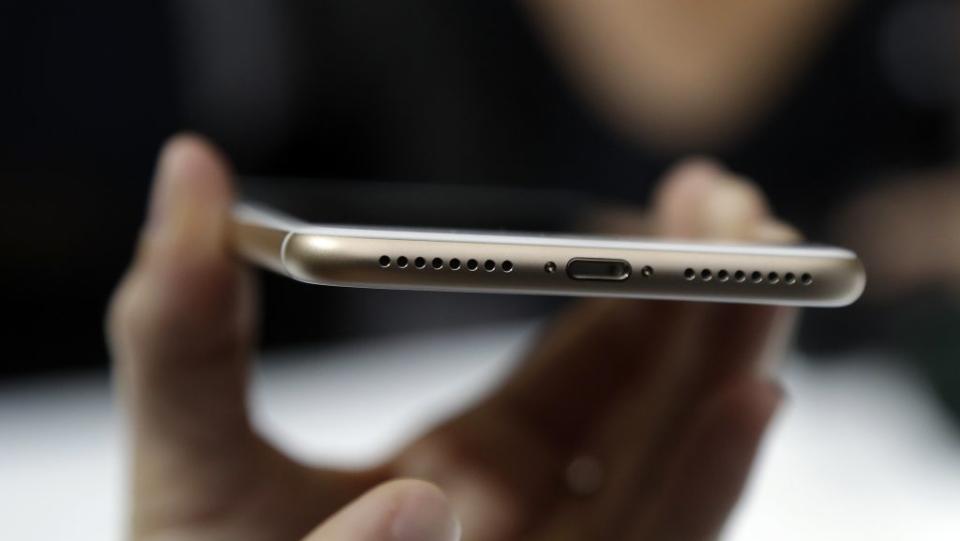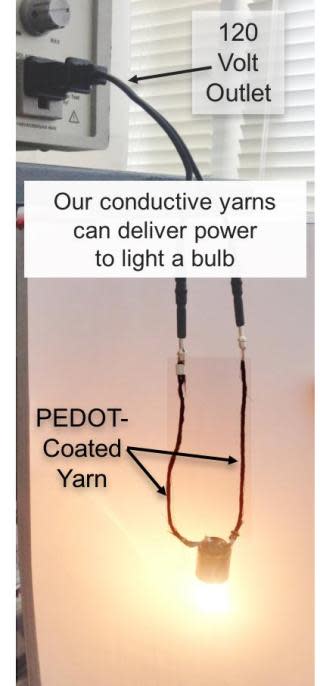Scientists found a way to turn ordinary clothes into power generators using body movement

Movement is energy. Anytime you move an object, including your arms or legs, you’re transferring energy to it. That kinetic energy can be turned into other types of energy, which means you could potentially harvest it and turn it into a power source—a dream scientists have been working on for some time.
One group of scientists at the University of Massachusetts-Amherst has a promising method that involves coating ordinary, off-the-shelf fabric, such as cotton, with a microscopically thin layer of a conducting polymer. The process effectively transforms the fabric into an electrode, capable of conducting the electricity generated by the friction of the fabric rubbing against itself. Now imagine using that cotton to make a jacket—one that could power a device as you move around in it, going about your daily life.
Trisha Andrew, the materials scientist who led the project, says with the polymer-coated fabric, her team has been able to generate a few microwatts of electricity, enough to power small LED lights, a Fitbit, or a heart monitor. “We can’t charge a smartphone right now, but we hope to one day,” she adds. Just as notable, according to the team, the conductive fabric doesn’t lose its breathability or flexibility, it can be washed and ironed, and you can’t tell by touching it that it has been coated at all.
The scientists bought 14 different fabrics, including multiple samples of cotton, linen, silk, and some others, from a common crafts store. They applied the polymer poly(3,4-ethylenedioxythiophene), or PEDOT, using a method called vapor deposition. The process is similar to how fire deposits soot on a wall.

The team at UMass has a bright idea.
The polymer coating, which had a thickness about one-tenth the diameter of a human hair, didn’t change the feel of the fabrics or increase their weight by more than 2%. But it did allow the fabric to conduct electricity.
Importantly, bunching or folding the fabric didn’t change its conductivity. The team also rubbed the fabrics, heated them on a hot plate, washed them in detergent, and ironed them to see how they would respond. The only thing that decreased conductivity was hot water, whether in a laundry cycle or as steam during ironing. But the fabric stood up just fine to cold laundering, body-heat level temperatures, and dry ironing using the iron’s “wool” or “silk” setting.
Any commercial application is still very theoretical. The fabric can be made into two leads, letting you hook it up to anything you choose. But to actually charge a product such as a Fitbit—or eventually a phone—would require an adapter to connect to the device’s charging port. That’s a whole other engineering challenge that would most likely have to undertaken by a commercial enterprise.
Still, Andrew and her team aren’t alone in seeing the potential. Other scientists have also been working on polymer-coated, conductive fabrics.
One issue Andrew and her group might need to overcome is cost. Textile scientists haven’t always embraced chemical vapor deposition because it’s expensive and poses some technical challenges. But Andrew and her team believe its commercial use in producing items such as sunglasses and potato-chip bags over the past several years shows it can be cost-effective.
Undoubtedly the reality of conductive clothes is getting nearer. This fall, Levi’s and Google will actually release a jacket made of fabric with metal alloys woven into the yarn, allowing its surface to be touch-responsive, like your smartphone screen. It’s not hard to imagine a smartphone-charging jacket being a possibility in the near future.


Sign up for the Quartz Daily Brief, our free daily newsletter with the world’s most important and interesting news.
More stories from Quartz:
